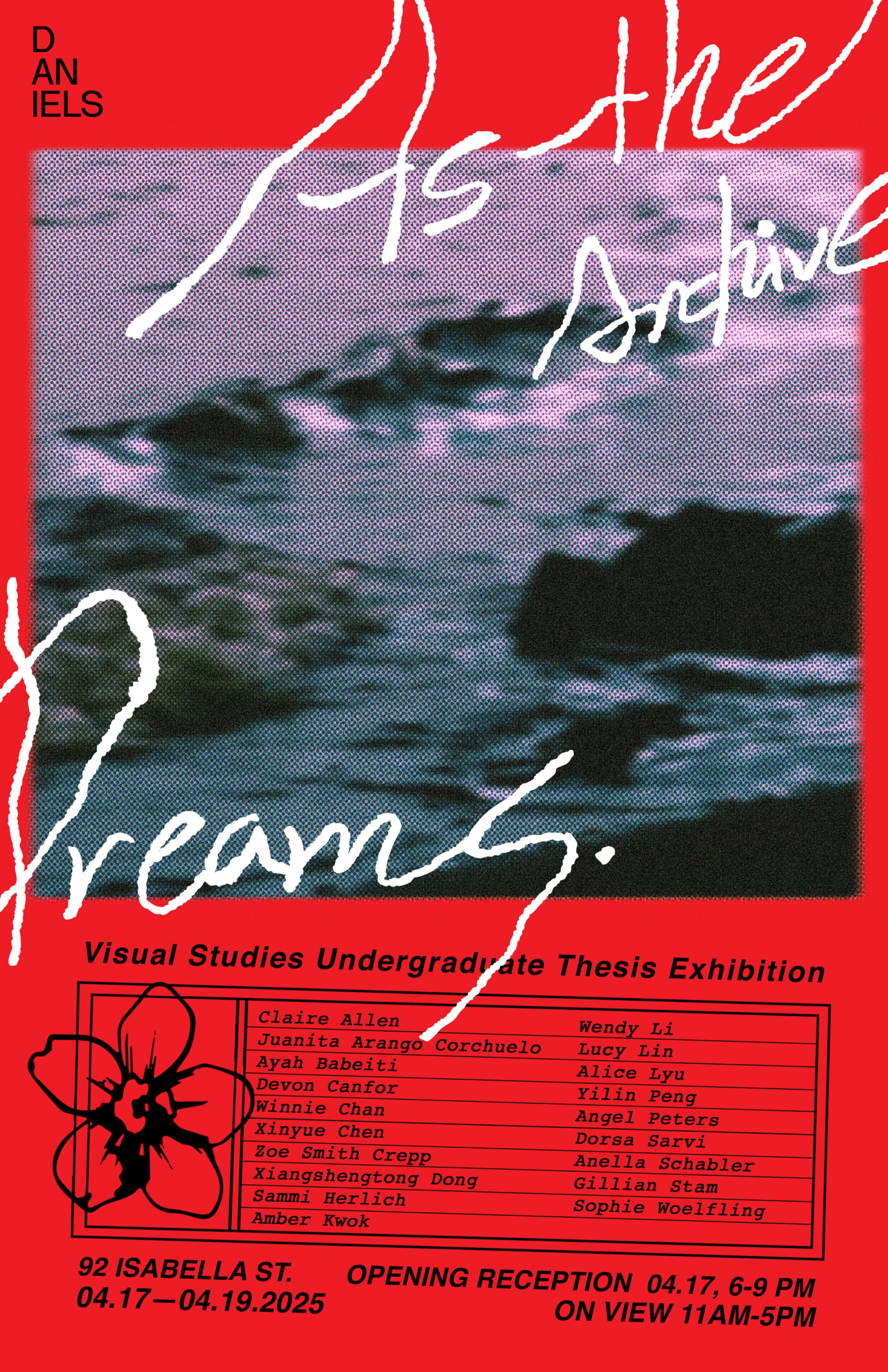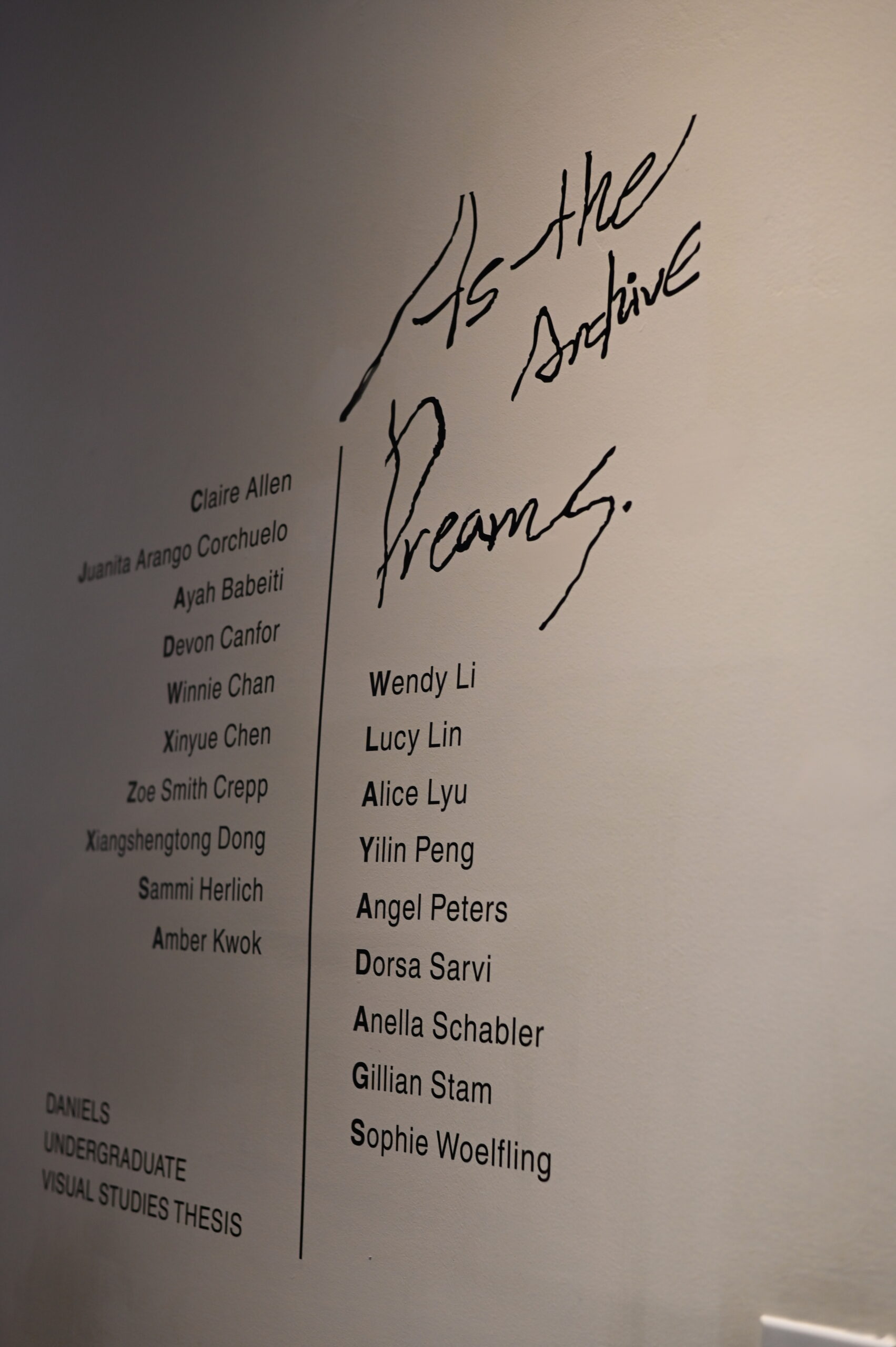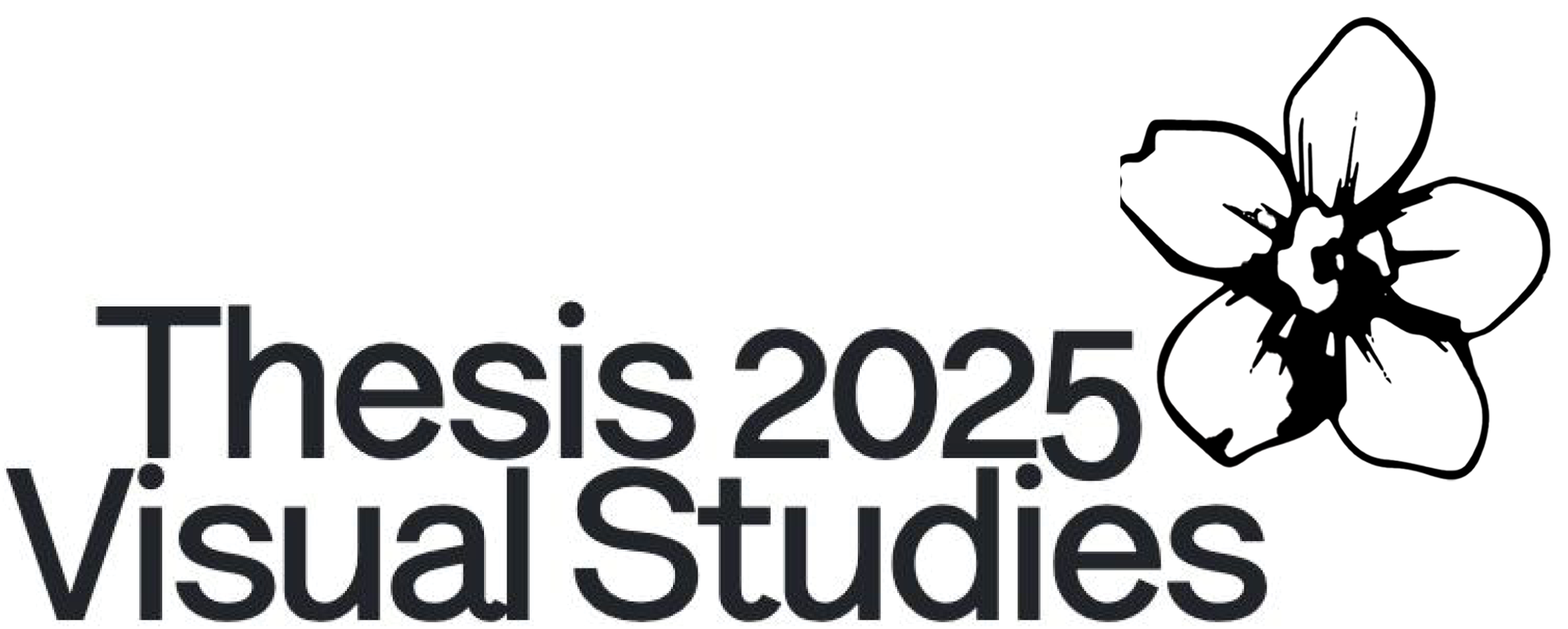About
As the Archive Dreams
This website features the diverse creative works of VIS 431 /VIS 43o 2025 Thesis students in the Bachelor of Arts in Visual Studies program at the John H. Daniels Faculty of Architecture, Landscape, and Design at the University of Toronto.
VIS 431/VIS 430 is the culmination of the Specialist in Visual Studies or Critical Practices streams. This year-long course is comprised of research-creation Thesis Projects in the practices of writing, publishing, studio work and critical analysis and form the basis for the student-organized final exhibition that occurs at the end of Winter term of works developed and produced over the year.
As the Archive Dreams is a group exhibition that will showcase the final thesis projects of the 2025 cohort from April 17–19, 2025 (Instagram @uoftvisthesis). The exhibition invites viewers to engage with the exhibit as a living, breathing entity—an assemblage of memories, stories, and objects that transcend time and space. Each work here approaches the roots of an archive not as a static repository, but as a dynamic process of preservation, transformation, and renewal. Drawing upon personal histories, cultural narratives, and communal legacies, we reinterpret what it means to document, remember, and reimagine.
As visitors engage with these works, they become participants in the archival process. In witnessing, remembering, or even contributing, they too help shape an ever-evolving narrative. The archive grows and dreams, not as a keeper of the past, but as an active participant in the present and the future.
Here, the archive becomes alive—a testament to action, transformation, and the enduring power of memory.


Curatorial Statement
Archives have long been perceived as neutral, static entities—a collection of documents and objects curated for future generations, intended to preserve knowledge and serve as evidence of the past. But what does it mean for the archive to come alive? In an evolving conception of archives as living, we encounter the perceived construct of their neutrality: organically assembled, guided by an innate logic devoid of external influence, even the documenter’s position. This view of the archive as an autonomous, self-sustaining entity invites further dissection—acknowledging the fundamental truth of power and the malleability of its genesis. How do we reimagine the archive as a living, breathing entity that shifts and evolves with shifting contours of time, context, and perspective? What if the archive transcended from a site of preservation to one of possibility? What if it could dream, its visions fragmented and porous, continuously moving and growing?
As the Archive Dreams beckons exploration within this speculative space, acknowledging that memories are activated through artistic and critical inquiry. It imagines the archive as unsteady, contingent, and pulsating with potential. Developed within the Daniels Faculty Visual Studies undergraduate thesis course, this exhibition combines the diverse practices of 19 emerging artists and researchers engaging image, text, and theory in year-long projects, a culmination of our inquiries—journeys marked by deep conceptual research, material experimentation, and sustained personal reflection. Throughout this process, our practices have unfolded in continual dialogue: with history, with one another, and with the complex questions lingering at the edges of our research. Our process has been a negotiation—between past and present, clarity and ambiguity, personal narrative and collective memory—recognizing that archives thrive through continued re-engagement.
In the act of dreaming, the archive invites slippages between truth and fiction, absence and presence, history and myth. The works in this exhibition trace these complexities, positioning the archive not merely as a cabinet of curiosities but as fertile ground for reinterpretation. Like pages overwritten and passed through generations and geographies, our works reframe the real and postulate the possible. Through photographs, digital residues, and embodied gestures, the artists endeavour to preserve that which eludes containment: longing, contradiction, and dissonance. We present the archive as expansive, inviting inquiry rather than definitive proof.
This exhibition asks: What does it mean to archive something in flux? How do we make space for what is yet unwritten? Instead of fixing memory in place, the artists invite interpretive shifts—between temporalities, between what was recorded and what was erased, and between historical fact and speculative reimagining. Anchored thoughtfully in the historic Foy House, we reflect on how spaces serve as custodians of memory. We collaborate with the Foy House through sound, movement, and site-responsive gestures, embodying intertwined narratives and palpable presence.
Materiality becomes a conduit. Some works traverse the tactile intimacy of memory, while others bridge into digital realms—pixels flicker, screens invite touch, and remembrance lingers mid-gesture, straddling presence and disappearance. The archive’s malleability is in its material, with each medium carrying legacies of accumulation and erasure. Paper creases, data corrupts, paintings crack, sentences fray—a transformation emulating memory’s resistance to containment. And so the archive exists in its dream as neither dormant nor definitive but continuously reshaping itself—activated through touch, inquiry, and the creative potential of revisitation.
While each thesis project reflects individual pursuits, together they reveal a web of shared inquiries—questions of belonging, identity, authorship, inheritance, displacement, and resistance. Here, the archive is envisioned as a vibrant weave of memory, always susceptible to fraying. It is shaped not only by what is gathered but by what slips loose, woven not towards resolution but through ongoing acts of making and unmaking. Our body of work bears witness to the labour of learning in proximity—to each other, to critique, to the unresolved. Building this exhibition was as much about solitude as about exchange: shaped through listening and disagreement, revision and support. It was a communal process that affirmed knowledge, and memory-making was inherently collaborative. We invite visitors into the exhibition not as spectators but as interlocutors—drawn into the unfinished work of the archive as it drifts between record and reinvention.
Crucially, As the Archive Dreams extends, it is an invitation to witness, feel, and remember otherwise. In this way, the exhibition becomes a commons for collective memory, where viewers are not separate from the archive but participants in its becoming.
—Winnie Chan and Angel Peters



